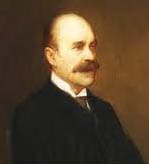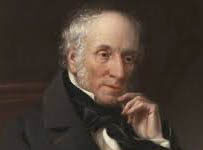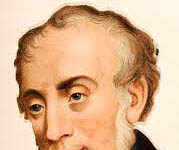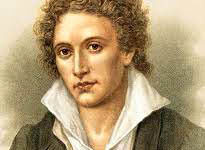Walter Pater’s Contributions to the History of the Principles and Theories of Literary Criticism
Walter Pater’s Contributions to the History of the Principles and Theories of Literary Criticism
Walter Horatio Pater (1839-1894) was a great critic of late Victorian England. For the first time in England, he advocated the principle of “Art for Art’s sake” in contrast with his former critic Mathew Arnold who propagated the principle of “Art for life’s sake”. As a matter of fact, Pater was closely associated with the Aesthetic Movement in England, the followers of which believed in the Cult of Beauty or the enjoyment of beauty and pleasure for its own sake without considering the moral or deductive purpose of literature.
As a critic, Walter Pater was learned, cultured, fastidious, and painstaking and what he wrote, he wrote after much study and refinement and that is why he had left behind him a meager quantity of critical works as under—
Studies in the History of the Renaissance 1873
This book is a collection of a series of critical essays on a number of renaissance writers, both English and foreign published from time to time in the magazine called The Fortnightly. The book contains essays on Leonardo-Da-Vinci, Michael Angelo, etc. The Preface and The Conclusion of the volume contain his clear-cut creed of literary criticism.
Marius, the Epicurean, 1885
The book is the history of Marius, who was a young artist symbolizing and typifying the spiritual side of man. The book may be taken to be allegorical because in disguise the book is the expression of Pater’s mental inclination to Epicureanism.
Appreciations, 1889
This book is a collection of impressionistic essays on a number of English romantic writers such as Wordsworth, Coleridge, Lamb etc. This book opens with his well-known essay On Style and ends with a Postscript on Criticism and Romanticism.
Plato and Platonism,1893
As the title of the book suggests it is a study of Plato’s philosophy and his influence through the centuries.
Through those books, Walter Pater exhibited his critical literary career and owned great respect as a critic. Those books contain both his practical and theoretical criticism. Along with his practical criticism, he revealed his own views and principles of literary criticism. He cast his views especially on: (1) The Purpose of Arts (2) On Style (3) Distinctions between Criticism and Romanticism and (4) His view on the qualities of the critic of the literature. Let us discuss his theories as follows:
The Purpose of Literature and Arts
Pater’s view on the Purpose of Literature and Arts was Aesthetic. He advocated the principle: “Art for Art’s Sake” and began a movement known as the ‘Aesthetic Movement’ in literature. The followers of this movement regarded the worship of Beauty to be the highest goal of life. And thus they did not consider morality in any art. To them, the purpose of art was exclusively to impart aesthetic pleasure through the cultivation of beauty. It had nothing to do with morality or with any other utilitarian considerations. They thought that the span of life on the earth is so short and so they should hurry to enjoy and the enjoyment of pleasure lies in one’s sensations and experiences derived from beauty. Walter Pater writes:
”The work of the great poets is not to teach lessons or enforce rules or even to stimulate us to noble ends; but to withdraw the thoughts for a little while from the mere machinery of life, to fix them with appropriate emotions, on the spectacle of those great facts in man’s existence which no machinery affects.”
The above-quoted lines by Walter Pater express his own view in brief on the purpose of arts. Superficially it seems that his view on the purpose of arts repudiates didactic and moral notes in arts. But in reality, Pater was not against morality. His doctrine “Art for Art’s Sake” does not mean that Pater advocated mere sensualism, voluptuousness, licentiousness and immorality like Oscar Wilde and other followers of the cult of beauty. In art, Pater sought intellectual pleasure. In one essay he wrote: “Great art ceases to be an end in itself in as much as it is devoted further to the increase of man’s happiness to the redemption of the oppressed or the enlargement of our sympathies with each other.” Again he wrote, “Great art has something of the soul of humanity”. This view proves him to be an advocate of the doctrine of “art for life’s sake” like Mathew Arnold.
But in originating this creed of ‘art for art’s sake’ which is the cult of the Aesthetic Movement, Walter Pater was not original. The Aesthetic Movement began in France about fifty years earlier than Pater. The French poets Gautier and Baudelaire and the famous novelist Flaubert were its patrons in French. Gautier is called the Father of the Aesthetic Movement in France. His poems show his great preoccupation with whatever is beautiful. Baudelaire also shows in his poems his interest in the basic principles of aestheticism. He believed that art is a better source of beauty than nature. Whistler, a famous painter of the Victorian age of England is called the leader of the Aesthetic Movement in England— because he, very ardently tried to refute the ethical principles of John Ruskin. He said that the only test of art lies in its ability to evoke beauty. The moral test or the test of utility is absolutely irrelevant to literary judgment. Oscar Wilde developed this theory and said that the function of art is to provide exclusively pleasant sensations and the readers should enjoy these sensations. Thus Whistler, Oscar Wilde, and a few others had gone against the theories of Ruskin, Arnold and Carlyle who closely associated art with morality. Swinburne’s poems and ballads heralded the beginning of the Aesthetic Movement in England because his poems bore a note of sensuality. His poems were severely criticized by the moralities. But though Walter Pater was one of those who advocated Aestheticism in literature yet he was something different from them because in practice he was most temperate.
In the beginning, this Aesthetic Movement seemed to be popular but with the passing of time, the popularity of this cult began to wane. There are some causes as—
First, the general people are religious minded and they generally hesitate to advocate in public, the things and doings or practices which are immoral.
Secondly, the leaders who were associated with this movement were not so honest, and virtuous in practical life. Oscar Wilde was morally a degraded person. So were Whistler and some others whom the general public did not look at with good eyes.
Thirdly, while this movement was to be widened then world war-I began. During the period of war and unrest, none could cultivate beauty and can enjoy pleasure.
These were the immediate causes of the failure of the Aesthetic Movement in England. After World War-I, the socialism and communism of Marx and Lenin widened further and the people of any nation became conscious of social affairs and their mentality turned from individualism to socialism the creed of which is to promote social welfare.
Difference Between Prose and Poetry
Secondly, Walter Pater propounded his view on the Style of Arts. In the essay entitled ‘On Style’ he upheld his view very clearly. This essay begins with Pater’s own views on the difference and similarities between prose and poetry. He says that there is no essential difference between poetry and prose. He said that the real difference lies between ‘imaginative literature’ and the ‘literature of facts’. The ‘imaginative literature’ contains the delineation of the writer’s sense of facts and ‘literature of fact’ contains a mere transcription of reality. Pater thought that both prose and poetry were two branches of imaginative literature and so both of them are concerned with expressing the writer’s sense, feeling and enjoyment of facts of life in human society. Pater thought more that there is beauty in prose and poetry and the critics’ business is to enjoy, react and respond to those beauties and then they should convey their own enjoyment to their readers. Walter Pater preferred prose to poetry and says that prose is more suited to the complex modern age. More he says that in both prose and poetry the artist must be true to his vision of life.
Style of Arts
After saying about the distinction and similarity between prose and poetry, he goes on to say about style. By the term ‘Style’ he means the use of words and construction of sentences in any literary art.
In this connection, Pater at first gives emphasis on the Choice of Words. He says the writer must select his words very carefully. He must observe the distinction between words and words and thus he should reject newly coined words, gipsy phrases and vulgar words. But he admits that it is the writer’s tact or sensibility and painstaking labour which would help the writer to make such a choice. He suggests more that to choose the best and appropriate words a literary artist must be learned in the various branches of arts, sciences and philosophy so that by naturalizing their vocabulary in his composition, he may enrich the language and increase its expressive power.
After this, Pater prefers the economic use of words. He says that the artist must avoid all false ornament. He says that after selecting appropriate and economic use of words the artist should take care of the construction of sentences that should follow each other logically and naturally. The structure should have logical coherence. A sound structure requires an architectural design in which one sentence is joined to or fits in the other like bricks in a building. The construction of sentences with the economic use of appropriate words is called by Walter Pater, The Mind of Style.
After saying about the selection of words and economic uses of words in sentences, he goes on to say that besides this, the style, has a love, a color, an atmosphere, certain subtle graces—which is called by Pater the Soul Of Style. The soul is the element of personality in style. So in this sense, he says “Style is the man”.
In brief, it may be said that Pater thought “Words to be the body”, “structure of sentences to be the mind” and “certain subtle graces to be the soul”.
Distinctions Between Good Art and Bad Art
Thirdly, Pater makes a distinction between Good Art and Great Art. He says, to say in brief, that good art results when there is an absolute correspondence of expression to the artist’s vision. But good art may not necessarily be great art for great art depends not on manner but on the matter. To say in Pater’s own words, the following lines may be quoted:
”Good art but not necessarily great art; the distinction between great art and good art depends immediately, as regards literature at all events, not on its form but on the matter.”
He explains his view again in the following sentences:
“Good art becomes great art if it is devoted further to the increase of men’s happiness, to the redemption of the oppressed or the enlargement of our sympathies with each other, or to such presentment of new or old truth about ourselves and our relation to the world as may enable and fortify us in our sojourn here or immediately as with Dante to the glory of God, it will also be great art; if over and above those qualities, I summed up as mind and soul— that color and mystic perfume and that reasonable structure— it has something of the soul of humanity.”
Again, Peter goes on to say that great art results only when “it has the soul of humanity”. When the art of an artist has nobility, universal truth, universal validity and a sound subject matter then the art renders service to humanity.
Distinctions Between Classicism and Romanticism
Fourthly, Walter Horatio Pater turns his look on the terms of ‘Classicism and Romanticism’ and distinguishes between the two terms from his own point. This distinction is brought out clearly in the postscript to his book ‘Appreciations’ under the title ‘Classicism and Romanticism’. He says that it is often difficult to distinguish between the two terms, for they are used loosely. The word classical has often been used in a hard and merely scholastic sense, by those who are in praise of what is old and accustomed to the expense of what is new.
As regards the charm of classical literature, Pater points out that its charm is that of the well-known tale, to which we can never listen over and over again, because it is told so well. To the absolute beauty of its artistic form is added the accidental tranquil charm of familiarity.
As regards the term ‘Romanticism‘ he says that the romantic search is for a new manner and style. The essential quality of romanticism is “the addition of strangeness to beauty” and herein lies its real danger—something that is exaggerated. Out of the way or the strange and the artificial may be taken as things of beauty. Pater says citing the example of Pope that Pope is a classicist but becomes insipid because of a lack of curiosity which is not duly tampered with by the desire for beauty. Sophocles, on the other hand, is a bright illustration of the successful harmonization of the romantic spirit with classical tranquility.
Again Pater tries his best to distinguish both terms and says “the charm of romanticism is the charm of the spring of the unfolding of new forms, and strangely shaped flowers and scented fruits.” On the other hand, “the charm of the classicism is the charm that creeps out of the same landscape with a mellow richness of autumn.”
He concludes that a perfect work of art must unite the true qualities of classicism and romanticism. He says:
“Art should be fresh, new, spontaneous, decorum, but not hampered by decorum; gaining sobriety and richness from recognized method and due authority; but in the truest sense a development, neither a new departure nor a servile imitation.”
Qualities of a Critic of Literature
Fifthly, Pater prescribes a number of Qualities of a Critic of Literature— such as— (a) He should have tact and sensibility (b)He should be learned not only in literature but also in science and philosophies as to increase his vocabulary (c) His vision should be noble, only that he can detect dignity of matter, the true nobility, and grandeur of the vision of the writer.
As regards the function of the critic he says that first of all, the critic should detect the characteristic virtue of the writer. It is the fact and sensibility which enables the critic to distinguish what is characteristic virtue in a writer and what is not so characteristic. The second function of the critic is to disengage the poet’s virtue or his sense of things from common elements. Thirdly, he must also set forth the characteristic virtue of a writer for the benefit of the reader; to indicate what the source of that impression and under conditions is experienced.
Such is the task of the critic, but in the performance of this task, Pater prescribes no fixed rules or principles. Instead, he says, ‘the critic will have to depend on his own sensibility and intuitions’.
The above-discussed views are the contributions of Walter Pater to the history of the principles of literary criticism. But Pater as a critic and the laws laid down by him bear some faults as follows—
(i) Pater as a critic is not systematic. He leaves behind him not a systematic book of criticism. He wrote critical essays to subscribe to magazines only. He only says about a few phases of criticism.
(ii) Pater is not absolutely original in his view. He derived his views from the French writers in propounding his Aesthetic theory and in defining the purpose of art.
(iii) Though Pater was not immortal, yet some of his followers were absolutely immortal like Oscar Wilde, Whistler and others— for which the moralist looked obliquely at him. His doctrine; “Art for Art’s Sake” is explained by him in such a way that repudiates morality and the deductive function of literature. Immorality in the art cannot be approved of by the common people.
(iv) Fourthly what Pater says about style is praiseworthy no doubt, but he himself did not follow his rules strictly in his practice.
(v) Fifthly, his criticism has no definite purpose and direction. It is often inconclusive, whimsical and capricious.
(vi) As a critic, he says nothing about the matter of literature about the purpose of art and about the style of art. He gives no definition, no classification of literature. Moreover, though he is said to be a critic of criticism yet he is not so because he formulated no rules and principles. His views on style can be traced back to Longinus.
In spite of those faults and weaknesses of Pater as a critic, he has some greatness also because he was, as a critic much fastidious and painstaking and thus he tried his best to contribute to the best of what he perceived and thought. Though his purpose of art i.e. “art for art’s sake” is brought against the book of morality yet he could turn the course of literature from mere deductive motives to aesthetic motives. Moreover, his suggestion to the writers while he says that true art should be the combination of classical spirit as well as romantic spirit—is praiseworthy because the combination of the two spirits can make art good and pleasant.
His place in literature, as a critic, may not be high but he is not at the bottom, because he could have drawn many of his contemporaries under his ardent influence, and yet today his name is pronounced with honor as a leader of the Aesthetic Movement in literature. 0 0 0.
Walter Pater’s Contributions to the History of the Principles and Theories of Literary Criticism
N. B. The article originally belongs to the book entitled ‘ Essays on Literary Theory and Principle‘ by Menonim Menonimus.
Walter Pater’s Contributions to the History of the Principles and Theories of Literary Criticism
Books on Literary Criticism by M. Menonimus:
- World Short Story Criticism
- World Poetry Criticism
- World Drama Criticism
- World Novel Criticism
- World Essay Criticism
- Indian English Poetry Criticism
- Indian English Poets and Poetry Chief Features
- Emily Dickinson’s Poetry-A Thematic Study
- Walt Whitman’s Poetry-A Thematic Study
- Critical Essays on English Poetry
- Tawfiq al-Hakim’s Novel: Return of the Spirit-An Analytical Study
- Tawfiq al-Hakim’s Novel: ‘Yawmiyyat Naib Fil Arayaf’-An Analytical Study
- Analytical Studies of Some Arabic Short Stories
- A Brief History of Arabic Literature: Pre-Islamic Period (500 AD-622 AD)
- A Brief History of Arabic Literature: Early Islamic Period (622 AD-661 AD) …
Related Search:
- Walter Pater and Aestheticism
- Art for Art’s Sake
- Arnold’s Concept of Poetry as a Criticism of life
- Poetry Definition Types
- Walter Pater’s Contributions to the History of the Principles and Theories of Literary Criticism











